Filters
As the Tasks screen displays a compilation of all the tasks associated with your current workflow, you can further streamline the view by applying filters to it.
- Let's explore what filters are, how to create them, and how to utilize them.
How Filters Work In A8Flow, And Their Properties

Filters are a set of criteria that allow users to determine which of the tasks are to be displayed on their tasks screen. Each filter comprises at least one or more conditions, and only tasks that meet these conditions are displayed when the filter is selected.
There are a couple of filters available to you by default:
- My Tasks - Displays all tasks assigned to the current user.
- My Group Tasks - Displays all tasks assigned to the groups that the user is a part of.
- All Tasks - Displays all tasks.
Creating And Managing Filters
Creating A Filter
- To create a new filter, click the "plus" button.

The "Create A Filter" page will open.
- The first step is to create a column. To do that, Click the
Choose Columnsbutton.
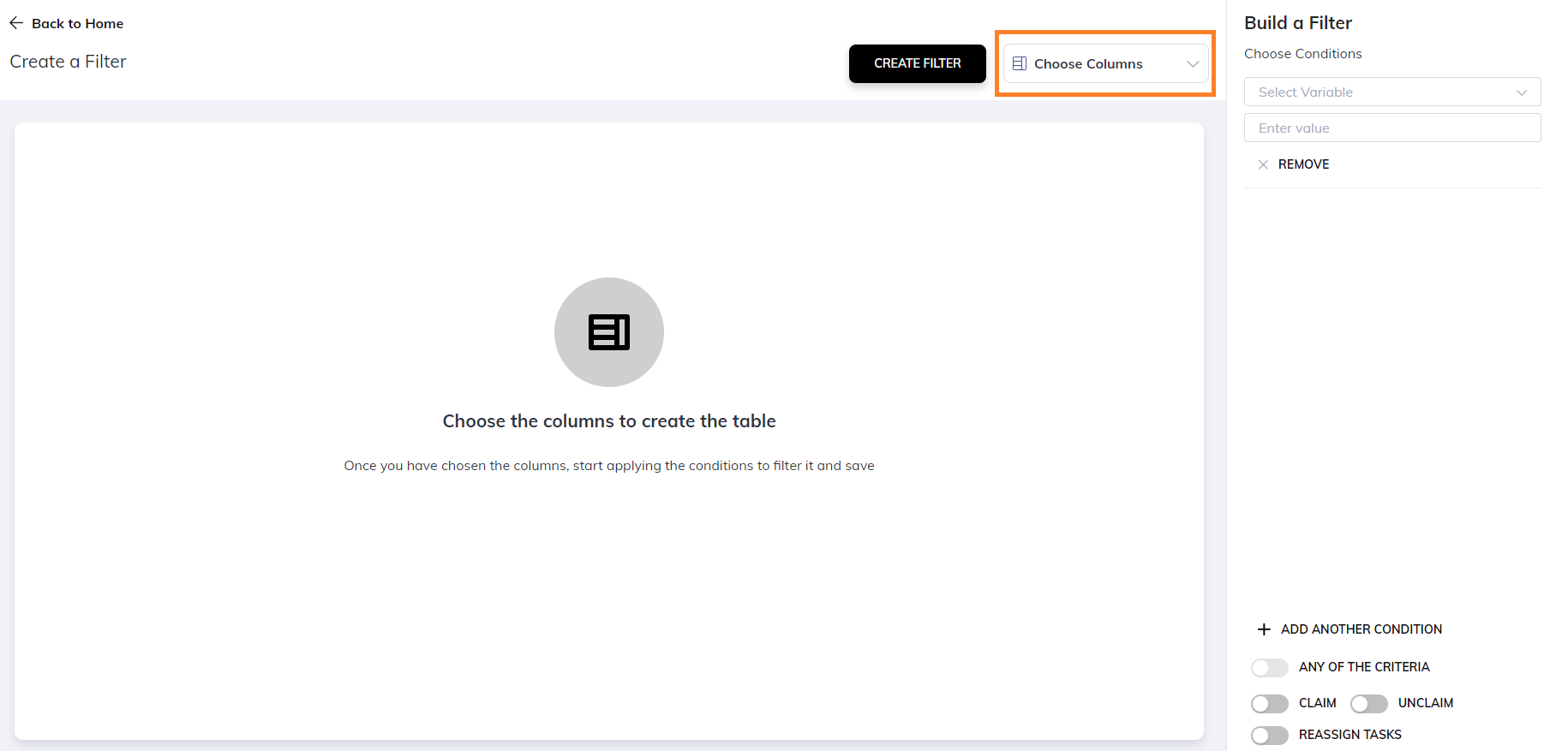
A drop-down will pop.
| - | - |
|---|---|
 | By default you will have Task Name & Process Definition as the Column choices. Note: You will have to select atleast One column before you can create the table. - Now, click on the Add New Column button (on the drop-down window) to start adding new columns.- Enter the values of the column in their respective "Variable Name" and "Define Lable" fields. - Once you have added the required no. of columns, click the Create Table button. |
The newly created Table will now be displayed with the "Name Lable" that you have assigned it.
- Click the
Create Filterbutton.

A pop-up will open.
- Add a name to the filter, and click on
Submit.
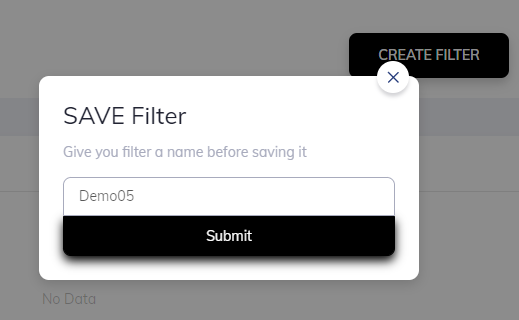
You are done. Now, you should have the newly created filter in the list.
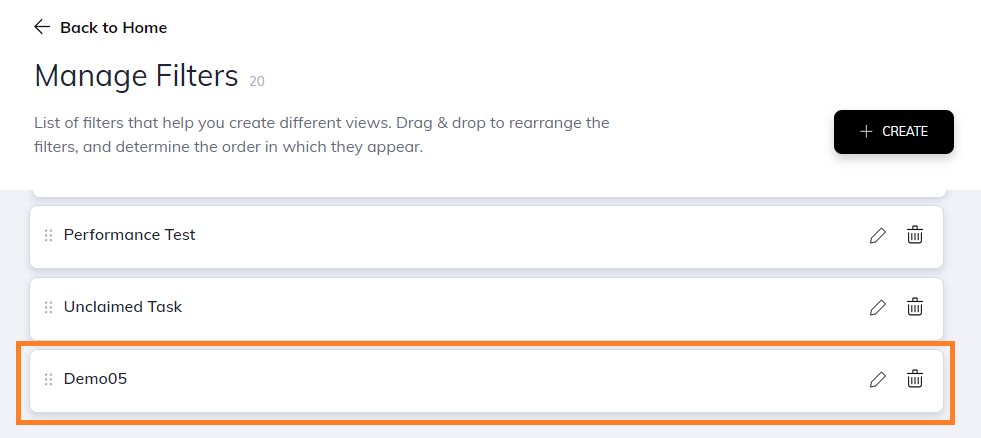
Editing Filters
To edit a filter, click on the edit icon next to the filter. This allows users to modify the conditions for that filter.
Adding Conditions
To add a new condition to a filter, follow these steps:
- Click on the
Add Another Conditionbutton. - Enter the variable and the value for the condition.
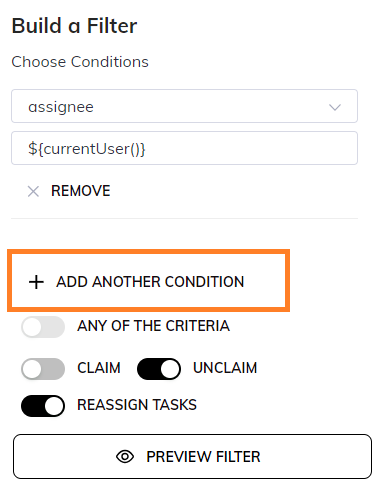
Example: "Unassigned: True" will display all non-assigned tasks.
Deleting Conditions
To remove a condition from a filter, Click on the "Remove" button next to the condition you wish to delete.
Rearranging Filters
Users can rearrange the filter list by dragging and dropping them. Click on the six dots next to the filter name and move it to the desired position.
Process Variables
Process variables are created based on business logic. Click on the "Edit columns" button to set up variable filters. Users can provide conditions and values for each variable to further refine task filtration.
Tasks - View Modes
Users can choose to have their tasks listed in two different views.
- Table View - Lists all variables assigned to the filter for user convenience.
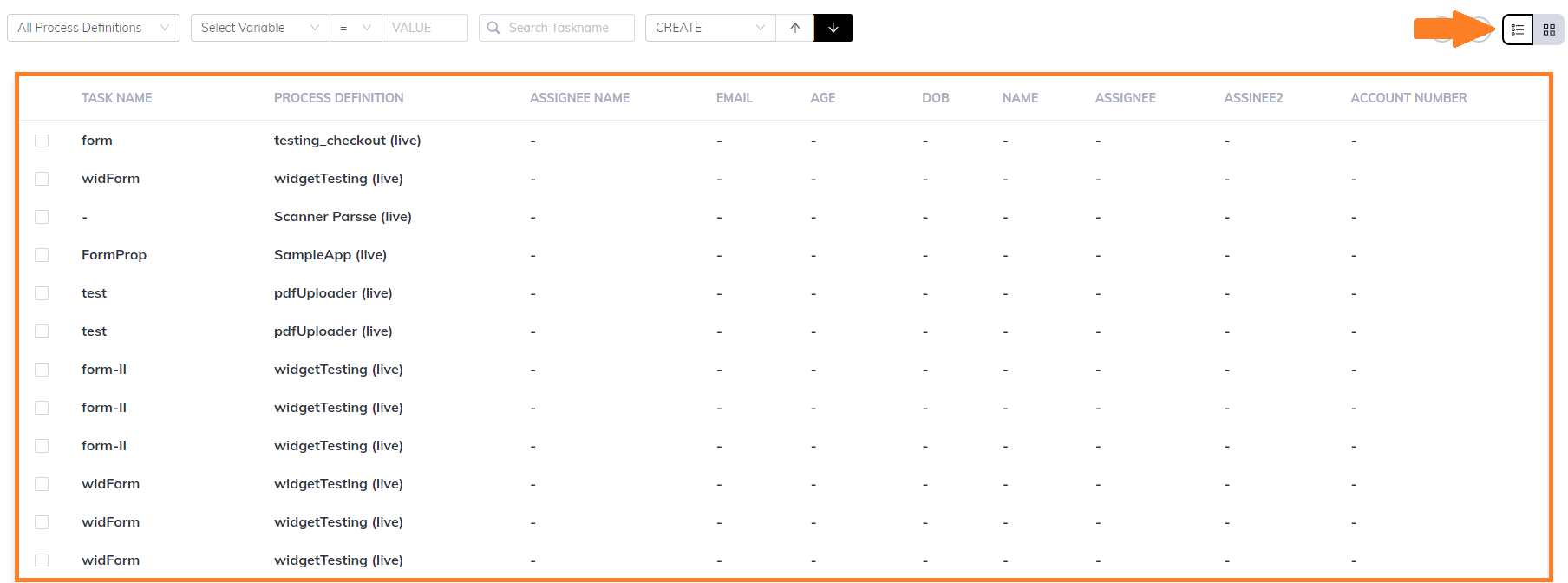
- Card View - The default view that displays each task as a card.
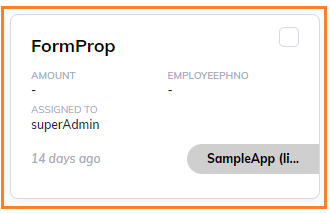
Using Filters
Process Definition Filter
Use the "Process Definition" filter to filter tasks based on the available applications. This filter helps users focus on tasks related to a specific application.
Variables Filter
The Variables Filter encompasses (5) process variables. It is created by clicking on the Edit columns button. Process variables are created based on the business logic.
You can define the specific conditions via the corresponding values in the filtering fields. For example, a variable filter could be set as 'Age (variable) > (condition) 18 (value)' to display tasks where the age variable exceeds 18.
Note: System variables, such as Assignee and Groups, are universal across all users and are automatically provided by default.
Search Filter
Users can search for specific task names using the search feature. Simply enter the task name in the search bar to find relevant tasks.
Sorting Tasks
Tasks can be sorted by various parameters, including created time, priority, and task name. Choose between ascending or descending order for each sorting option.
Additional Functionalities
ANY OF THE CRITERIA
The "ANY OF THE CRITERIA" option allows tasks to be displayed if they satisfy any one of the specified task conditions.
CLAIM
The "CLAIM" button appears in filters where the user is not already assigned to the task. Clicking this button allows the user to claim the task. If a task is already claimed, attempting to claim it again will display an error message.
UNCLAIM
The "UNCLAIM" button appears in filters where the user has already claimed a task. Clicking this button allows the user to unclaim the task.
REASSIGN TASKS
Admins or authorized personnel, such as Team Leads, can use the "REASSIGN TASKS" functionality to assign a task to another user.